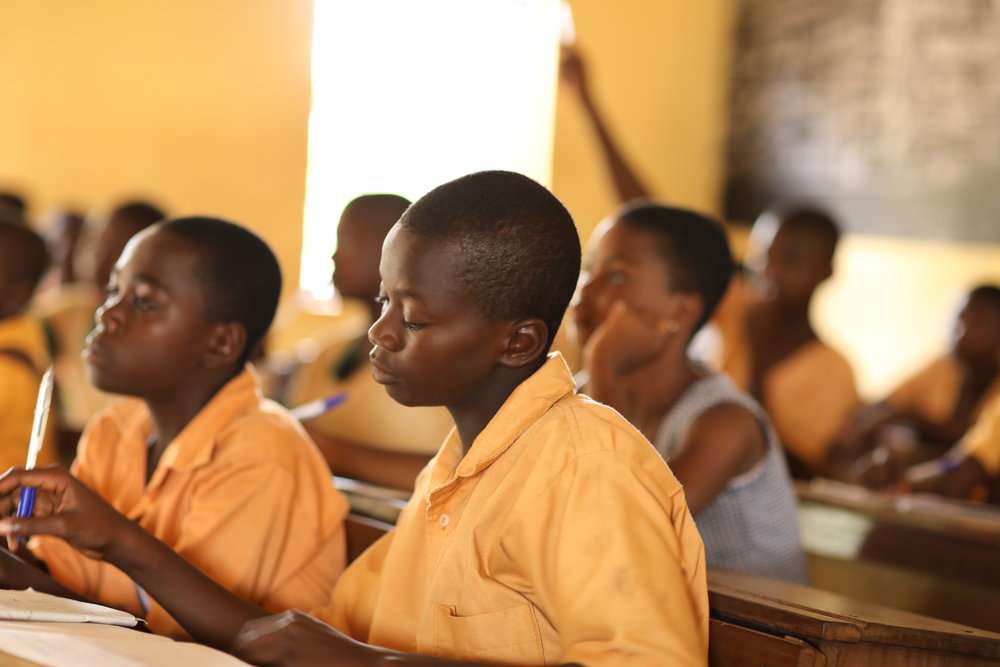The Ahafo Region has emerged first in the maiden National Standardised Test for Primary Four pupils organised by the Ghana Education Service.
The Volta Region was the lowest performing region, with 96 per cent of the Primary Four pupils falling within the Below Basic level, three per cent attaining basic level and one per cent attaining proficiency.
The Western and the Western North regions followed, with 96 and 93 per cent, respectively, of their pupils falling within the Below Basic level.
The Eastern, the Upper East and the Western regions followed, with 77, 76 and 72 per cent, respectively, in the Below Basic level.
The national test which was conducted in December last year will help the Ministry of Education generate data on the performance of pupils in English Language and Mathematics.
Below is the chart for the results in English and Mathematics:
Breakdown
In general, the performance of the pupils in English was fairly better than in Mathematics.
That is, 50% of the pupils were Below Basic level in English, while the other 50% were made up of the Basic, Proficient and Advanced.
The findings also indicated that primary school pupils were seriously challenged in Mathematics.
62% of the pupils were Below Basic level while the other 38% were made up of the Basic, Proficient and Advanced.
About NST
The National Standardized Test (NST) is for the assessment of curriculum standards including the 4Rs, knowledge, skills, values and attitudes that are central to the new Pre-Tertiary education curriculum.
It also reflects increasing globalization and interest in global mandates. It represents an overall shift in emphasis in assessing the quality of education inputs to learning outcomes, and responsive to some global mandates
In all 14,883 primary schools participated in the P4 National Standardized Test (NST) exercise.
According to the Education Strategic Plan 2018-2030, the targeted proficiency for pupils in P4 in Mathematics and English is supposed to be 38 and 53 respectively, by the 2025/26 Academic Year.
Click below to download the full presentation
NST PRESENTATION – LATEST (1) (1)
organised by the Ghana Education Service.
The Volta Region was the lowest performing region, with 96 per cent of the Primary Four pupils falling within the Below Basic level, three per cent attaining basic level and one per cent attaining proficiency.
The Western and the Western North regions followed, with 96 and 93 per cent, respectively, of their pupils falling within the Below Basic level.
The Eastern, the Upper East and the Western regions followed, with 77, 76 and 72 per cent, respectively, in the Below Basic level.
The national test which was conducted in December last year will help the Ministry of Education generate data on the performance of pupils in English Language and Mathematics.
Below is the chart for the results in English and Mathematics:
Breakdown
In general, the performance of the pupils in English was fairly better than in Mathematics.
That is, 50% of the pupils were Below Basic level in English, while the other 50% were made up of the Basic, Proficient and Advanced.
The findings also indicated that primary school pupils were seriously challenged in Mathematics.
62% of the pupils were Below Basic level while the other 38% were made up of the Basic, Proficient and Advanced.
About NST
The National Standardized Test (NST) is for the assessment of curriculum standards including the 4Rs, knowledge, skills, values and attitudes that are central to the new Pre-Tertiary education curriculum.
It also reflects increasing globalization and interest in global mandates. It represents an overall shift in emphasis in assessing the quality of education inputs to learning outcomes, and responsive to some global mandates
In all 14,883 primary schools participated in the P4 National Standardized Test (NST) exercise.
According to the Education Strategic Plan 2018-2030, the targeted proficiency for pupils in P4 in Mathematics and English is supposed to be 38 and 53 respectively, by the 2025/26 Academic Year.
Click below to download the full presentation
NST PRESENTATION – LATEST (1) (1)

